Pic story: municipal-level intangible cultural heritage inheritor of batik in Tangshan
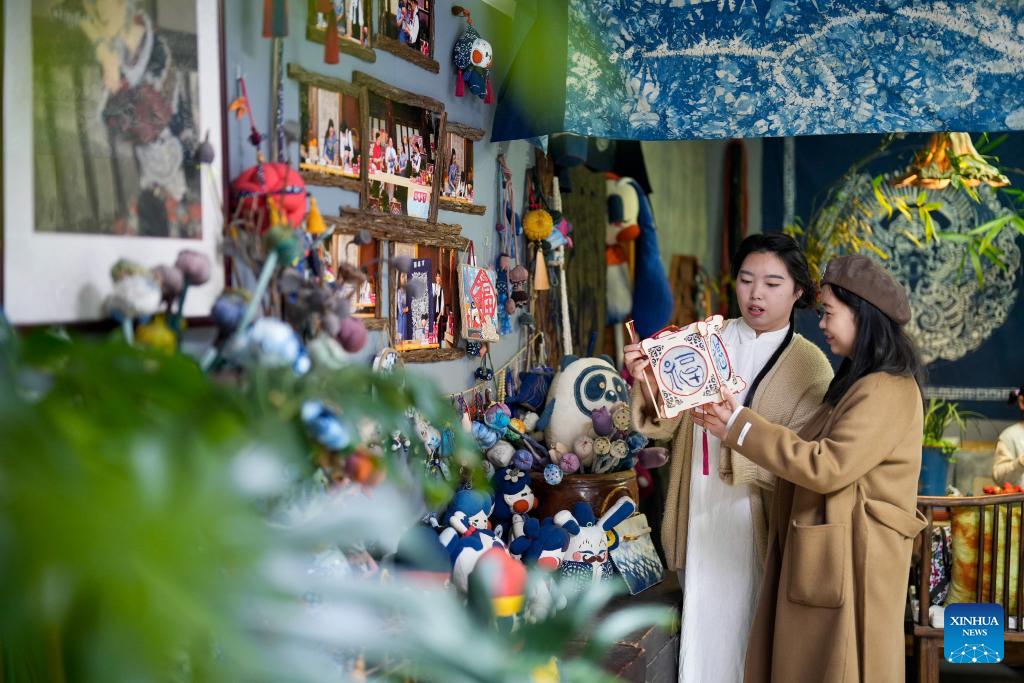
Li Sa (L) introduces a batik product to a customer at her studio in Tangshan, north China's Hebei Province, April 6, 2024.
Li Sa, 25, has been learning batik making technique since a very young age from her mother Gan Caiyun, a municipal-level intangible cultural heritage inheritor of the crafts. After graduation from college, Li chose to start up her own business in her hometown Tangshan and set up a batik studio, devoting herself into the inheritance and creation of batik making technique. As a municipal-level intangible cultural heritage experience base, her studio has attracted many young talents.
In recent years, Li has offered a series of voluntary and experiential courses in residential compounds, schools and nursing homes, as a way to pass down the batik technique. Integrating the aesthetics of modern life with the batik technique, the cultural and creative products her team designed are appreciated by the market. (Xinhua/Mu Yu)

Li Sa draws a pattern for batik products in Tangshan, north China's Hebei Province, April 6, 2024.
Li Sa, 25, has been learning batik making technique since a very young age from her mother Gan Caiyun, a municipal-level intangible cultural heritage inheritor of the crafts. After graduation from college, Li chose to start up her own business in her hometown Tangshan and set up a batik studio, devoting herself into the inheritance and creation of batik making technique. As a municipal-level intangible cultural heritage experience base, her studio has attracted many young talents.
In recent years, Li has offered a series of voluntary and experiential courses in residential compounds, schools and nursing homes, as a way to pass down the batik technique. Integrating the aesthetics of modern life with the batik technique, the cultural and creative products her team designed are appreciated by the market. (Xinhua/Mu Yu)
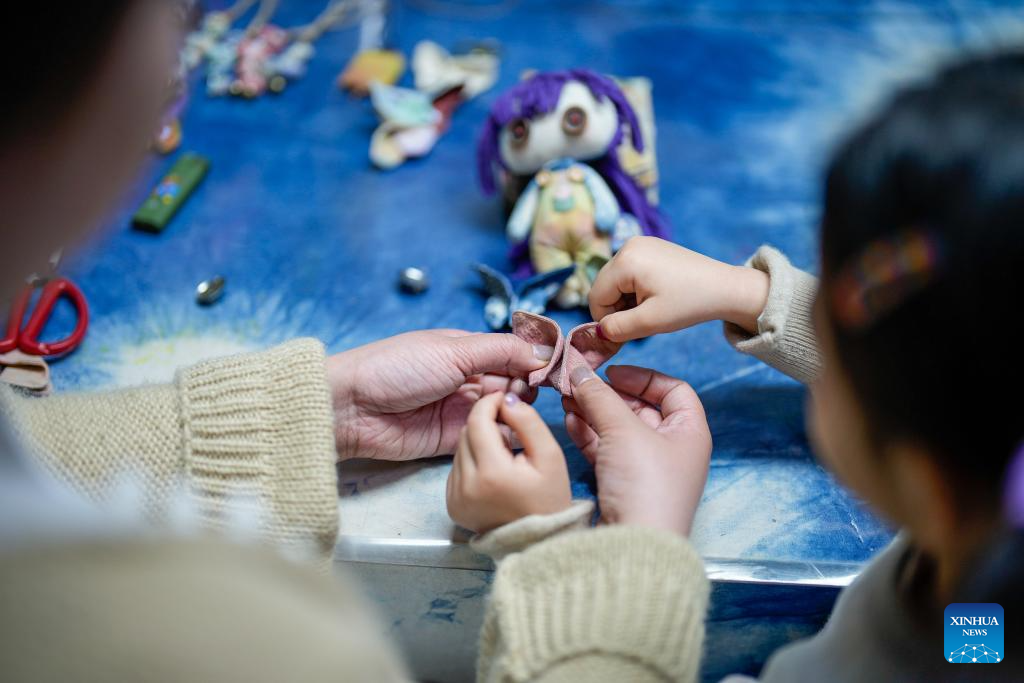
Li Sa (L) teaches a young learner to make batik product at her studio in Tangshan, north China's Hebei Province, April 6, 2024.
Li Sa, 25, has been learning batik making technique since a very young age from her mother Gan Caiyun, a municipal-level intangible cultural heritage inheritor of the crafts. After graduation from college, Li chose to start up her own business in her hometown Tangshan and set up a batik studio, devoting herself into the inheritance and creation of batik making technique. As a municipal-level intangible cultural heritage experience base, her studio has attracted many young talents.
In recent years, Li has offered a series of voluntary and experiential courses in residential compounds, schools and nursing homes, as a way to pass down the batik technique. Integrating the aesthetics of modern life with the batik technique, the cultural and creative products her team designed are appreciated by the market. (Xinhua/Mu Yu)

Li Sa (1st L) and her mother Gan Caiyun (2nd L) demonstrate the batik technique at her studio in Tangshan, north China's Hebei Province, April 6, 2024.
Li Sa, 25, has been learning batik making technique since a very young age from her mother Gan Caiyun, a municipal-level intangible cultural heritage inheritor of the crafts. After graduation from college, Li chose to start up her own business in her hometown Tangshan and set up a batik studio, devoting herself into the inheritance and creation of batik making technique. As a municipal-level intangible cultural heritage experience base, her studio has attracted many young talents.
In recent years, Li has offered a series of voluntary and experiential courses in residential compounds, schools and nursing homes, as a way to pass down the batik technique. Integrating the aesthetics of modern life with the batik technique, the cultural and creative products her team designed are appreciated by the market. (Xinhua/Mu Yu)
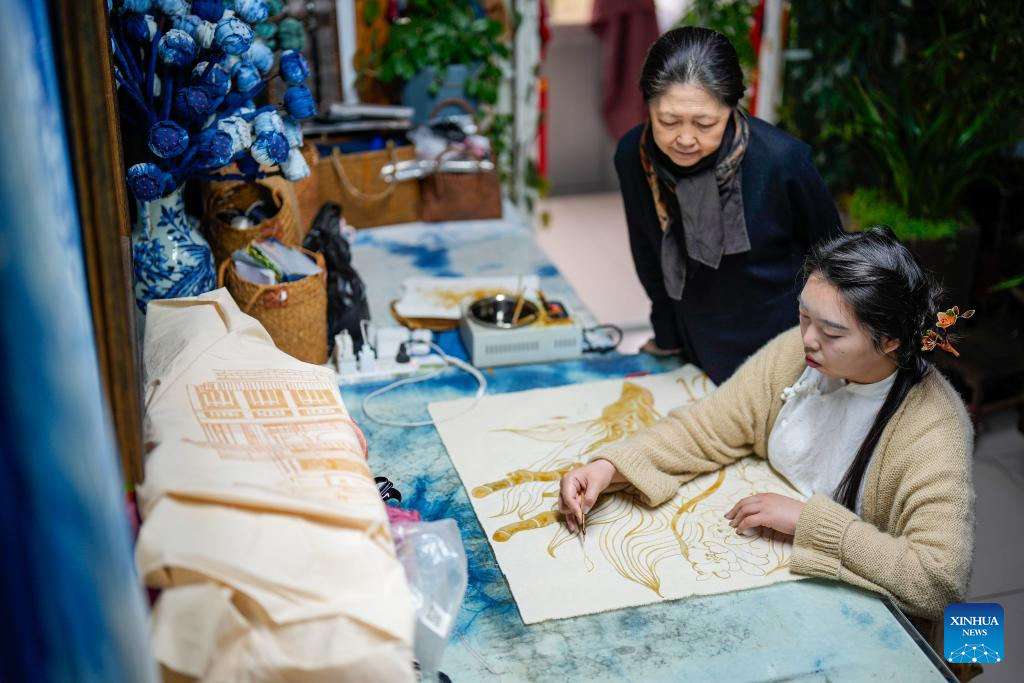
Li Sa (R) demonstrates the batik technique at her studio in Tangshan, north China's Hebei Province, April 6, 2024.
Li Sa, 25, has been learning batik making technique since a very young age from her mother Gan Caiyun, a municipal-level intangible cultural heritage inheritor of the crafts. After graduation from college, Li chose to start up her own business in her hometown Tangshan and set up a batik studio, devoting herself into the inheritance and creation of batik making technique. As a municipal-level intangible cultural heritage experience base, her studio has attracted many young talents.
In recent years, Li has offered a series of voluntary and experiential courses in residential compounds, schools and nursing homes, as a way to pass down the batik technique. Integrating the aesthetics of modern life with the batik technique, the cultural and creative products her team designed are appreciated by the market. (Xinhua/Mu Yu)

A young learner views batik products at Li Sa's studio in Tangshan, north China's Hebei Province, April 6, 2024.
Li Sa, 25, has been learning batik making technique since a very young age from her mother Gan Caiyun, a municipal-level intangible cultural heritage inheritor of the crafts. After graduation from college, Li chose to start up her own business in her hometown Tangshan and set up a batik studio, devoting herself into the inheritance and creation of batik making technique. As a municipal-level intangible cultural heritage experience base, her studio has attracted many young talents.
In recent years, Li has offered a series of voluntary and experiential courses in residential compounds, schools and nursing homes, as a way to pass down the batik technique. Integrating the aesthetics of modern life with the batik technique, the cultural and creative products her team designed are appreciated by the market. (Xinhua/Mu Yu)
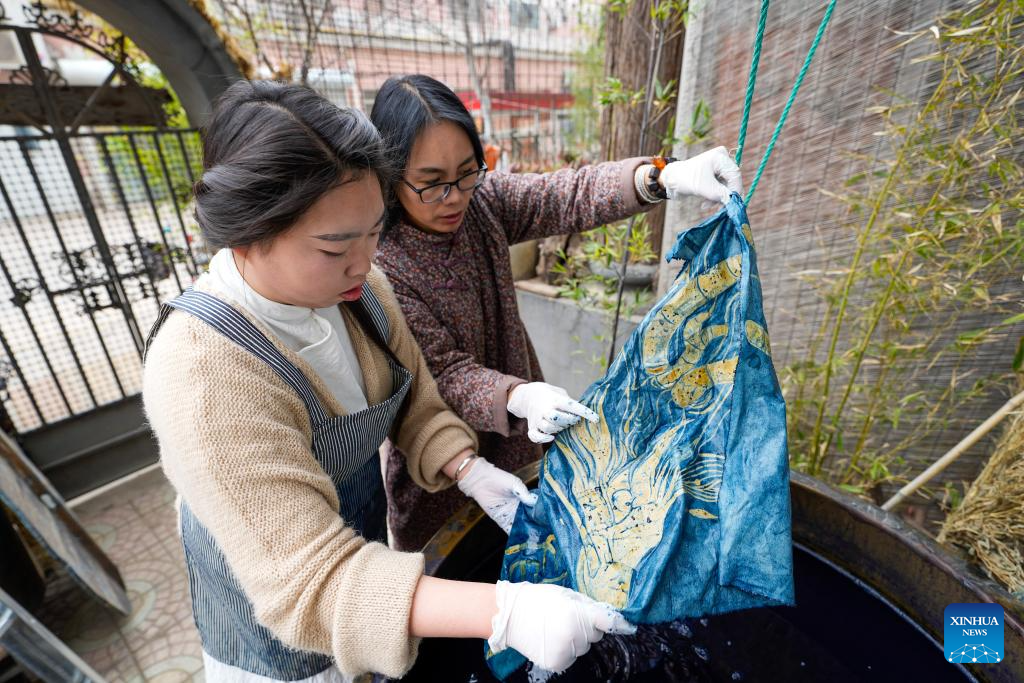
Li Sa (L) and her mother Gan Caiyun make batik cloth in Tangshan, north China's Hebei Province, April 6, 2024.
Li Sa, 25, has been learning batik making technique since a very young age from her mother Gan Caiyun, a municipal-level intangible cultural heritage inheritor of the crafts. After graduation from college, Li chose to start up her own business in her hometown Tangshan and set up a batik studio, devoting herself into the inheritance and creation of batik making technique. As a municipal-level intangible cultural heritage experience base, her studio has attracted many young talents.
In recent years, Li has offered a series of voluntary and experiential courses in residential compounds, schools and nursing homes, as a way to pass down the batik technique. Integrating the aesthetics of modern life with the batik technique, the cultural and creative products her team designed are appreciated by the market. (Xinhua/Mu Yu)
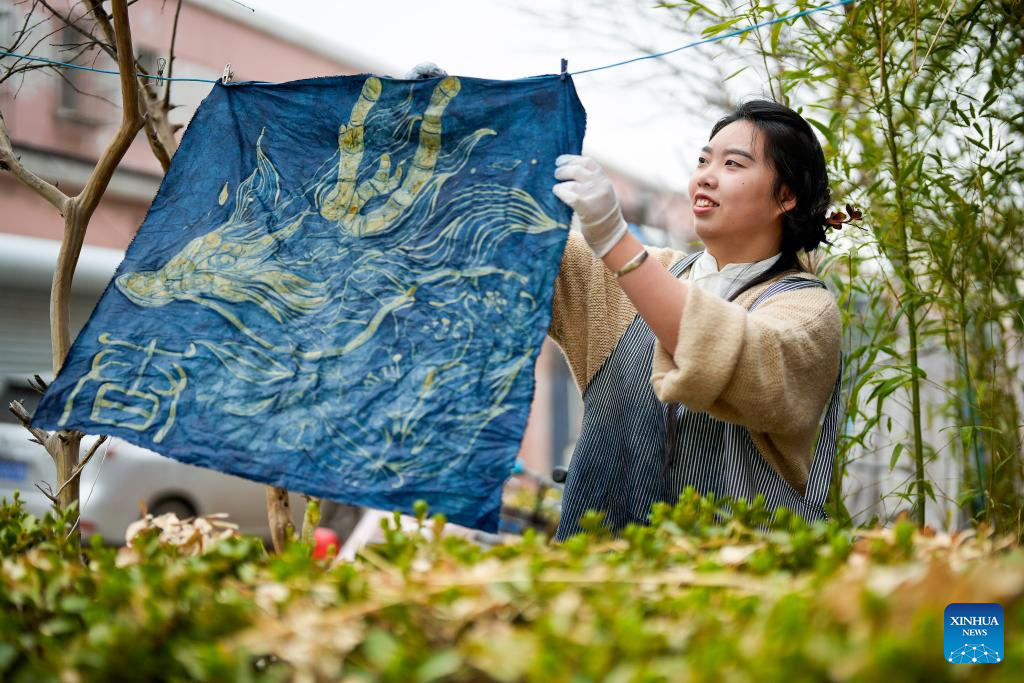
Li Sa smooths out batik cloth in Tangshan, north China's Hebei Province, April 6, 2024.
Li Sa, 25, has been learning batik making technique since a very young age from her mother Gan Caiyun, a municipal-level intangible cultural heritage inheritor of the crafts. After graduation from college, Li chose to start up her own business in her hometown Tangshan and set up a batik studio, devoting herself into the inheritance and creation of batik making technique. As a municipal-level intangible cultural heritage experience base, her studio has attracted many young talents.
In recent years, Li has offered a series of voluntary and experiential courses in residential compounds, schools and nursing homes, as a way to pass down the batik technique. Integrating the aesthetics of modern life with the batik technique, the cultural and creative products her team designed are appreciated by the market. (Xinhua/Mu Yu)
Photos
 Migratory birds spotted in Karamay, NW China's Xinjiang
Migratory birds spotted in Karamay, NW China's Xinjiang Tourist-dedicated New Orient Express gears up to offer luxury train travel around NW China's Xinjiang
Tourist-dedicated New Orient Express gears up to offer luxury train travel around NW China's Xinjiang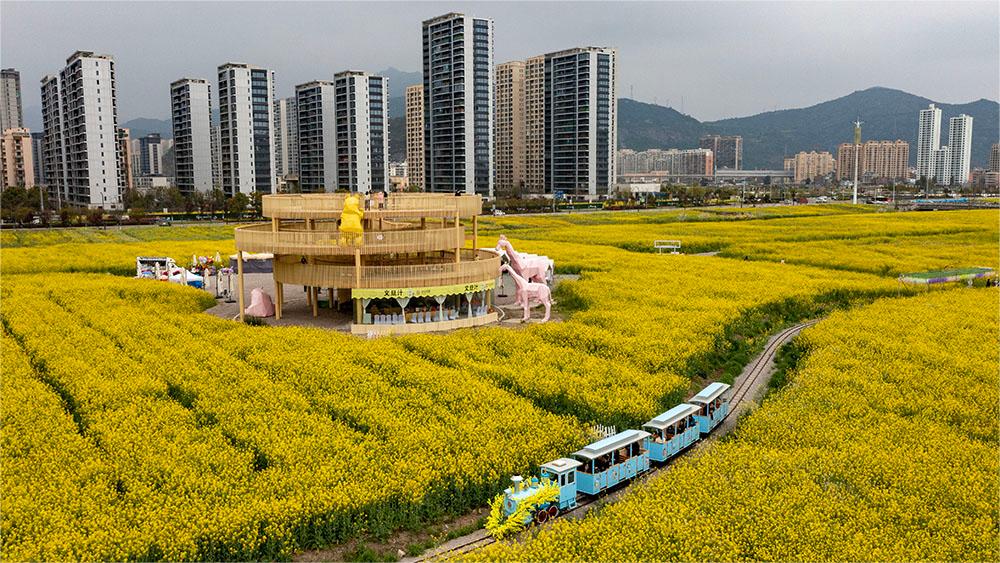 Spectacular sea of blooming rapeseed flowers attracts tourists to Yueqing, E China's Zhejiang
Spectacular sea of blooming rapeseed flowers attracts tourists to Yueqing, E China's Zhejiang Rare bird species spotted in north China's grassland
Rare bird species spotted in north China's grassland
Related Stories
- Feature: Ethiopian artist's artwork takes inspiration from Chinese classic I Ching
- Adding a Chinese twist to global cultural entertainment market
- Symposium commemorates 100th birth anniversary of Chinese novelist Jin Yong
- Intangible cultural heritage exhibition held on BFA sidelines
- Cape Town Carnival showcases Chinese cultural highlights
- Paper knife cuttings inheritor in east China's Zhejiang
Copyright © 2024 People's Daily Online. All Rights Reserved.





